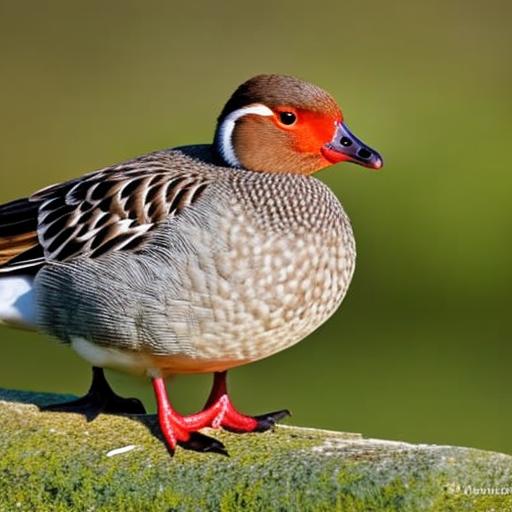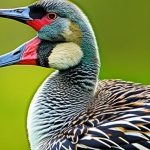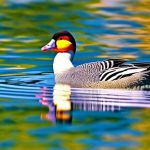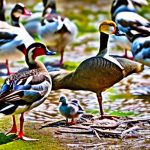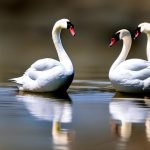Geese are beautiful creatures that are often admired for their graceful flight and elegant appearance. However, when they invade certain areas, they can become a nuisance and cause damage. Whether it’s a golf course, a park, or a residential neighborhood, geese can leave behind droppings that are not only unsightly but also pose health risks. In order to address this problem, many people have turned to using mothballs as a means of geese control. In this article, we will explore the effectiveness of using mothballs for geese control and discuss the safety precautions and alternative methods that can be considered.
Key Takeaways
- Mothballs can be used as a geese deterrent.
- Geese are attracted to areas with water and open spaces.
- Mothballs work by emitting a strong odor that geese find unpleasant.
- Mothballs can be effective in keeping geese away, but should be used with caution.
- Alternative methods for geese control include physical barriers and habitat modification.
Understanding Geese Behavior
To effectively deter geese, it is important to understand their behavior and what attracts them to certain areas. Geese are social animals that prefer open spaces near water sources such as ponds, lakes, and rivers. They are attracted to areas with short grass where they can easily spot predators and have access to food. Geese also have a strong homing instinct and tend to return to the same location year after year.
Geese can be difficult to deter because they are adaptable and intelligent creatures. They quickly learn to associate certain areas with food and safety, making it challenging to keep them away. Additionally, geese have a strong sense of community and will often follow the lead of one or two individuals. This means that if a few geese decide to settle in an area, others are likely to follow.
How Mothballs Work
Mothballs contain a chemical called naphthalene or paradichlorobenzene, which gives off a strong odor that is unpleasant to geese. This odor is similar to the scent of predators, which triggers a natural instinct in geese to avoid the area. When placed strategically around an area where geese are unwanted, mothballs can create a barrier that deters them from settling in that location.
The chemical properties of mothballs make them effective in deterring geese. Naphthalene and paradichlorobenzene are volatile compounds that vaporize at room temperature. As they vaporize, they release a strong odor that is repulsive to geese. This odor lingers in the air and creates a deterrent effect that can last for several weeks.
Effectiveness of Mothballs
Mothballs have been found to be effective in keeping geese away from certain areas. Many people have reported success in using mothballs to deter geese from their properties, including golf courses, parks, and residential areas. By strategically placing mothballs around the perimeter of an area or near water sources, geese can be discouraged from settling in that location.
One example of successful use of mothballs for geese control is at a golf course in New Jersey. The golf course had been struggling with geese invading the fairways and leaving behind droppings that were not only unsightly but also posed health risks to golfers. After placing mothballs around the perimeter of the golf course, the number of geese sightings significantly decreased, and the problem was effectively resolved.
Safety Precautions
While mothballs can be effective in deterring geese, it is important to take safety precautions when using them. Mothballs contain toxic chemicals that can be harmful to humans, pets, and wildlife if ingested or inhaled. It is important to keep mothballs out of reach of children and pets and to avoid placing them near food sources or water sources.
Mothballs can also have a negative impact on the environment. The chemicals in mothballs can leach into the soil and water, causing pollution and harm to plants and wildlife. It is important to use mothballs responsibly and dispose of them properly when they are no longer needed.
Alternative Methods
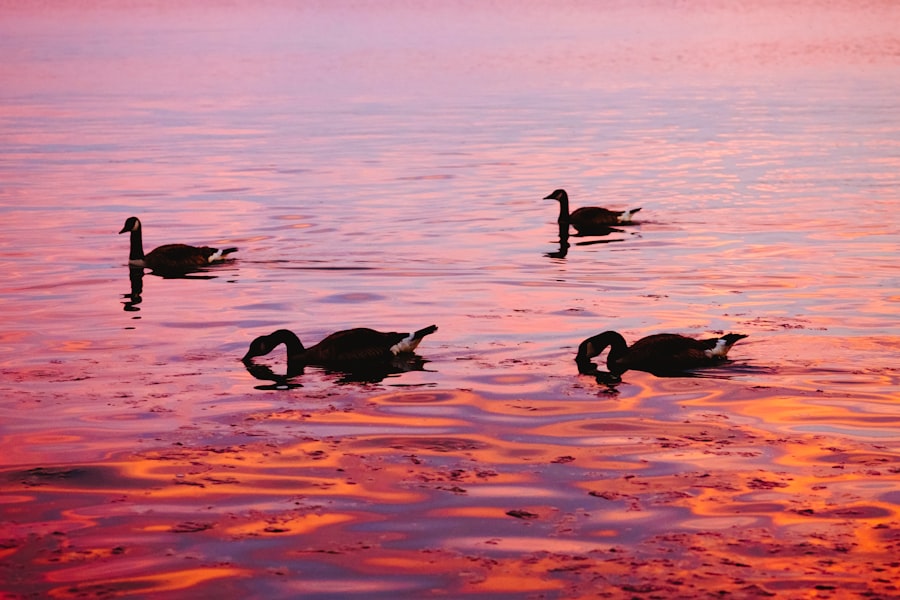
While mothballs can be effective in deterring geese, there are alternative methods that can also be considered. One alternative method is the use of visual deterrents such as scarecrows, reflective tape, or decoy predators. These visual deterrents can create a sense of danger and make geese feel unsafe, causing them to avoid the area.
Another alternative method is the use of sound deterrents such as noise cannons or ultrasonic devices. These devices emit loud noises or high-frequency sounds that are unpleasant to geese and can deter them from settling in an area. However, it is important to note that geese can become habituated to these sounds over time, so it may be necessary to change the sound patterns periodically.
Proper Use of Mothballs
To effectively use mothballs for geese control, it is important to follow proper usage guidelines. Mothballs should be placed strategically around the perimeter of the area where geese are unwanted. They should be placed in areas where geese are likely to land or gather, such as near water sources or feeding areas.
It is important to avoid placing mothballs directly on the ground or in areas where they can come into contact with water. Mothballs should be placed in a container or mesh bag to prevent direct contact with soil or water. This will help to minimize the environmental impact and ensure that the chemicals are contained.
Duration of Effectiveness
The duration of mothball effectiveness can vary depending on several factors. The size of the area being treated, the number of mothballs used, and the weather conditions can all affect how long the deterrent effect lasts. In general, mothballs can remain effective for several weeks before they need to be replaced.
It is important to monitor the area regularly and replace mothballs as needed. If geese start to return to the area or if their presence becomes more frequent, it may be a sign that the effectiveness of the mothballs is diminishing. By replacing the mothballs in a timely manner, the deterrent effect can be maintained.
Environmental Impact
While mothballs can be effective in deterring geese, it is important to consider the potential environmental impact. Mothballs contain toxic chemicals that can leach into the soil and water, causing pollution and harm to plants and wildlife. It is important to use mothballs responsibly and dispose of them properly when they are no longer needed.
When disposing of mothballs, it is recommended to contact your local waste management facility for guidance. They can provide information on how to properly dispose of mothballs and ensure that they are handled in an environmentally responsible manner.
Conclusion and Recommendations
In conclusion, using mothballs for geese control can be an effective method to deter geese from certain areas. Mothballs work by emitting a strong odor that is unpleasant to geese and triggers a natural instinct to avoid the area. However, it is important to take safety precautions when using mothballs and to consider the potential environmental impact.
If using mothballs, it is recommended to follow proper usage guidelines and monitor the area regularly to ensure their effectiveness. It is also important to consider alternative methods for geese control and weigh the pros and cons of each method. By taking a comprehensive approach and considering all factors, geese control can be effectively achieved while minimizing harm to the environment.
If you’re looking for effective ways to keep geese away, you may also be interested in learning about the benefits of using mothballs as a deterrent. Mothballs are known for their strong odor, which can help repel geese and other unwanted pests. To find out more about this method and how to properly use mothballs to keep geese at bay, check out this informative article on Poultry Wizard: Will Mothballs Keep Geese Away?
FAQs
What are mothballs?
Mothballs are small balls made of naphthalene or paradichlorobenzene that are used to repel moths and other insects from clothes and other stored items.
Do mothballs repel geese?
There is no scientific evidence to suggest that mothballs repel geese. While some people claim that the strong odor of mothballs can deter geese, it is not a reliable or effective method of keeping geese away.
Are mothballs safe to use around geese?
No, mothballs are not safe to use around geese or any other wildlife. The chemicals in mothballs can be toxic if ingested, and can also harm the environment if they leach into the soil or water.
What are some effective ways to keep geese away?
There are several effective ways to keep geese away, including using physical barriers like fences or netting, using noise deterrents like sirens or bird alarms, and using visual deterrents like scarecrows or reflective tape. It is also important to remove any food sources or nesting areas that may attract geese.
Why are geese a problem?
Geese can be a problem in urban and suburban areas because they can cause damage to property, create unsanitary conditions, and pose a safety risk to pedestrians and drivers. They can also be aggressive and territorial during nesting season.
Meet Walter, the feathered-friend fanatic of Florida! Nestled in the sunshine state, Walter struts through life with his feathered companions, clucking his way to happiness. With a coop that’s fancier than a five-star hotel, he’s the Don Juan of the chicken world. When he’s not teaching his hens to do the cha-cha, you’ll find him in a heated debate with his prized rooster, Sir Clucks-a-Lot. Walter’s poultry passion is no yolk; he’s the sunny-side-up guy you never knew you needed in your flock of friends!

